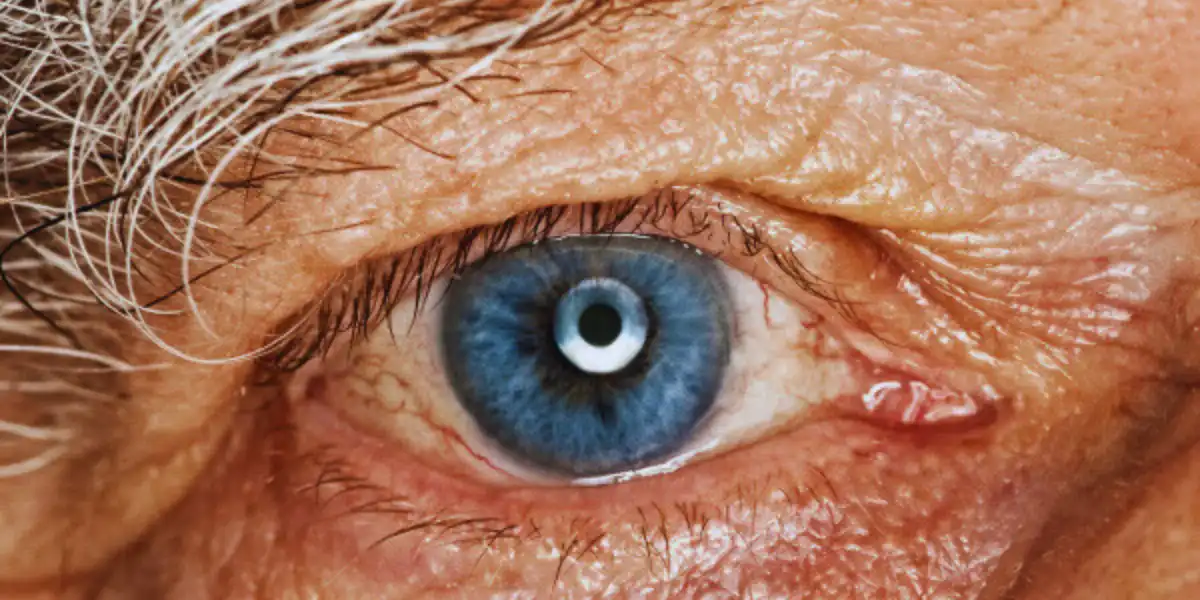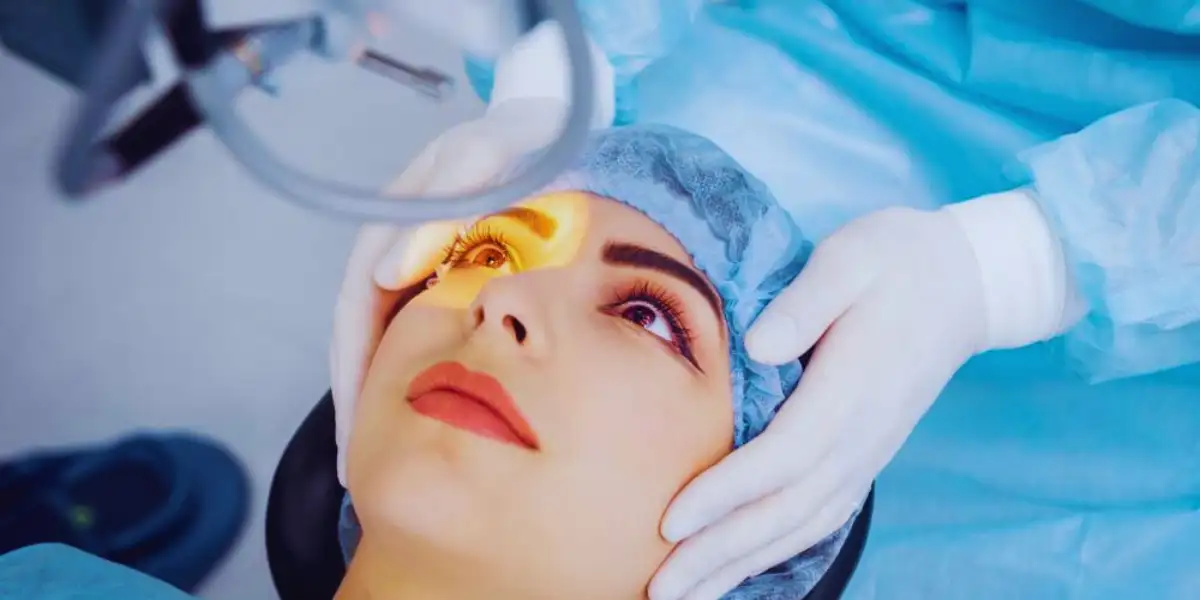Cataracts are a leading cause of vision impairment worldwide. They occur when the eye’s natural lens becomes cloudy. Most cataracts progress gradually and initially do not interfere with vision.
Traditionally, doctors treated this condition with surgery. However, recent advances have introduced more refined surgical techniques and potential non-surgical options.
This article explores the nature, types, and causes of cataracts. It also delves into the latest treatments available. It provides a comprehensive view of current strategies for managing this prevalent eye condition.
What Are Cataracts?
A cataract develops when proteins clump together in the eye’s lens. This obstructs clear vision. Aging is most often linked to this condition.
However, it can also result from genetic factors. It can also result from underlying health conditions or environmental influences.

What Are The Symptoms Of Cataracts?
The symptoms of cataracts include:
- Blurred or Foggy Vision: Seeing things as if through a cloudy lens.
- Trouble Seeing in Low Light: Difficulty seeing at night or in dim light.
- Light Sensitivity: Being easily bothered by bright light or seeing halos around lights.
- Needing More Light for Reading: Requiring brighter light than before for reading or other close-up work.
- Changing Vision Prescription Often: New glasses or contact lens prescriptions are needed more frequently.
- Colors Look Faded: Colors appear less vibrant or have a yellowish cast.
- Seeing Double in One Eye: Noticing double images when looking with one eye.
These symptoms usually get worse slowly. They might not be very noticeable early on, but they can become more obvious as the cataract grows.
What Are The Causes of Cataracts?
Several factors can cause cataracts:
- Getting Older: Cataracts often happen because of age.
- Eye Injuries: Hurting your eye can cause cataracts.
- Changes in the Eye’s Lens: When we age, the lens in our eye can alter and cloud up.
- Family Health Issues: Some health issues you’re born with can increase the chance of getting cataracts.
- Past Eye Operations: People who have undergone eye surgery may be more likely to get cataracts.
- Health Conditions: Illnesses like diabetes can increase the risk.
- Long-Term Use of Certain Medicines: Long-term use of steroid medicine can lead to the formation of cataracts.
These are the main causes of cataracts, often linked to age, health, and eye state.
What Are The Types of Cataracts?
Cataracts come in different types:
- Age-Related Cataracts: Most common in older people. Things like smoking, drinking a lot, diabetes, family history, or having certain eye operations can make these more likely.
- Traumatic cataracts: These happen after an injury to the eye. They can show up right after the injury or years later.
- Radiation Cataracts: Caused by exposure to radiation, like sunlight or cancer treatment.
- Pediatric cataracts: Rare in children but can occur at birth or develop later. They might be caused by family history, health problems during pregnancy, or the same reasons as adults.
- Secondary cataracts: These can happen after cataract surgery. The eye gets cloudy again because of scar tissue. A simple laser treatment usually fixes this.
Each type has different causes, and knowing them helps treat them right.
How are Cataracts Diagnosed?
Cataracts are usually found with simple eye tests.
- Eye Chart Test: You’ll see letters on a chart. This shows how much you can see.
- Microscope Exam: The doctor uses a special eye tool to check your eye up close. They look for issues like cataracts and other eye-related problems.
- Dilated Eye Exam: Eye drops are used to enlarge your pupils. This helps the doctor see your eye better from behind.
- Light and Dark Test: This checks how well you can see in various lights and how well you spot different colors.
- Eye Pressure Test: This is usually done, but it’s mainly for looking at other eye issues like glaucoma.
If the doctor detects a cataract, they will discuss with you its severity and what actions can be taken, such as surgery or other treatments.
Latest Treatments For Cataracts
Cataracts, where the lens in our eye gets cloudy, can greatly affect how we see things. With medical technology improving, there are now good treatments to help you see clearly again.
Adjusting Eyewear
Special Glasses or Sunglasses: For those with small cataracts, getting new glasses or using magnifying lenses may help their vision. Glasses for the eyes can help lessen bright light and too much light.
Home Lighting Changes
Repositioning Lights: Fixing how lights are set up at home can make it simpler to see and do daily tasks, giving comfort to people with cataracts.
Phacoemulsification Surgery
- Procedure: This is the most often used operation to remove cataracts. It uses a little cut in the eye.
- Ultrasound Device: A special sound tool splits the cloudy glass into smaller pieces.
- Lens Removal: A vacuum removes these pieces from the eye.
- Artificial Lens: A clear, fake lens is put in the eye to fix vision.
- Stitching: Usually, the cut is only closed with one stitch.
Extracapsular Cataract Surgery
- Larger Incision Needed: This operation needs a bigger cut than phacoemulsification to remove the cloudy lens.
- Stitches for Closure: Because the cut is bigger, it needs more sewing to close the injury.
- Higher Risk of Complications: This approach might increase the chance of extra problems like astigmatism.

Intracapsular Cataract Surgery
- Used for Severe Cases: This method is only used for big cataracts.
- Removal of Lens and Capsule: This process requires a big cut. Through this, the whole lens and its surrounding covering are taken out.
- Less Common: This method is done less often and for more difficult issues.
Conclusion
Finally, cataracts, a major reason for poor vision, can greatly change your daily life. They grow when the eye’s lens gets cloudy, usually from getting older, hurting the eye, or other health issues.
Signs like being unable to see clearly, having problems seeing in low light, and being sensitive to light can slowly worsen over time.
Fortunately, improvements in medical technology have resulted in good treatments. These can be easy fixes, such as better glass designs and changes to home lighting.
They also include different operations like phacoemulsification and extracapsular and intracapsular surgeries that doctors do to help improve eyesight.
Each cure idea helps control and fix good sight, improving life for those with cataracts.
References:
- Cataracts. National Eye Institute. https://www.nei.nih.gov/learn-about-eye-health/eye-conditions-and-diseases/cataracts. Accessed April 19, 2023.
- Liu YC, Wilkins M, Kim T, Malyugin B, Mehta JS. Cataracts (https://pubmed.ncbi.nlm.nih.gov/28242111/). Lancet. 2017;390(10094):600-612. Accessed 3/7/2023.